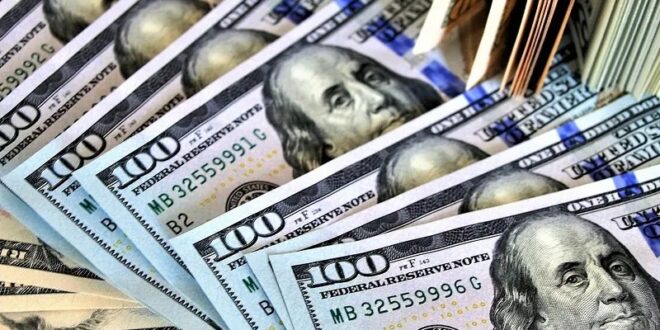The controversy surrounding the U.S. debt ceiling increase has intensified recently as the deadline for potential default draws near. Despite multiple rounds of negotiations, the U.S. government and Congress have yet to reach a final agreement on raising the debt ceiling. Consequently, the possibility of a government default has become a focal point in the capital markets and international economy. On May 24, Fitch Ratings, one of the major credit rating agencies, downgraded the outlook for the U.S. sovereign debt rating from AAA to negative, expressing concerns about the prospects of reaching a consensus on the debt ceiling.
Although the U.S. debt ceiling issue is fundamentally a technical matter related to the country’s finances, it has become increasingly politicized. The Republican-controlled House of Representatives currently seeks to tie the increase in the debt ceiling to deficit reduction, using it as a political tool to weaken the governing power of the Democratic Party. Conversely, the Democrats argue that the U.S. government’s long-term deficits and debt expansion are longstanding problems, not solely attributable to the current Democratic administration. They highlight the historical trend of debt expansion, including significant borrowing during the previous Republican administration under ex-President Donald Trump to finance increased spending. Accordingly, the Democrats advocate for an unconditional increase in the debt ceiling. In the highly divided U.S. political landscape, where the two parties struggle to reconcile, both sides seize this opportunity for political maneuvering, making it unlikely that an agreement will be reached until the last moment. This outcome is not entirely surprising, as many analysts have already deemed the annual debt ceiling spectacle largely without significance, as Fitch Ratings affirmed.
However, as the approaching date of June 1, referred to as the “X-date”, is drawing near, researchers at ANBOUND believe that if both parties struggle to effectively control the progress, the U.S. may unexpectedly face a technical default on its debt. This uncontrolled situation could trigger market turmoil, causing concerns across various sectors. Especially in the context of severe partisan confrontation, the prospects of cooperation and mutual understanding between the two sides are not optimistic. This is one of the factors considered by Fitch Ratings when adjusting the rating outlook. The agency states, “The brinkmanship over the debt ceiling, failure of the U.S. authorities to meaningfully tackle medium-term fiscal challenges that will lead to rising budget deficits and a growing debt burden signal downside risks to U.S. creditworthiness”.
The capital market has already reacted to the delay in implementing the debt ceiling. Market data on May 24 showed that the yields on some U.S. Treasury bonds maturing on June 1 soared overnight to 7.3710%, a significant increase from the previous day’s closing rate of 5.992%. The yields on U.S. Treasury bonds maturing on June 6 also surged to 7.491%, higher than many “junk bonds.” The Chicago Board Options Exchange Volatility Index (VIX), which measures investor panic and market risk, rose by 7.67% on May 23 and closed at 18.53 points. U.S. stocks also experienced consecutive declines. All of these indicate an increasing sense of unease in the capital market.
In fact, there are calls for the prompt resolution of the dispute between the U.S. government and Congress to eliminate uncertainties. Once the risk materializes, even with a short-term technical default, its impact will be profound. From this perspective, considering the influence of the U.S. dollar and U.S. capital, the uncertainties brought about by the debt ceiling are not just a problem for the U.S. government and fiscal system; they have a much greater negative impact on the international capital market. On one hand, Treasury bonds may be sold off, leading to rising yields. On the other hand, the USD may experience significant volatility, affecting asset pricing. As most international financial assets are denominated in the dollar, if Treasury bonds default, causing a change in the pricing foundation of the USD, not only will American corporate borrowing face a sharp increase in costs, but global financial assets will be reassessed and repriced. Moreover, due to the position of the USD, this impact is bound to spread globally and may potentially trigger a new financial tsunami. Even in the case of a technical default, the rapidly spreading risks it generates are likely to cause chain reactions that are difficult to reverse.
This is also the root cause of the weariness and concerns felt by the international community toward the drama unfolding in the U.S. Kristalina Georgieva, Managing Director of the International Monetary Fund (IMF), stated that if the U.S. fails to reach an agreement on raising the debt ceiling, the global economy will also suffer severe consequences. Economists too are worried that if the debt ceiling is not increased, the U.S. may experience a technical default on its debt within a month, thereby increasing the risk of a financial crisis. Treasury Secretary Janet Yellen has issued multiple warnings and calls for an immediate increase in the debt ceiling, stating that a debt default would occur quickly if not addressed. European Central Bank President Christine Lagarde has also cautioned that a debt default in the U.S. would be catastrophic for both the American and the global economies. Mohamed El-Erian, Chief Economic Advisor at Allianz in Germany, expressed in a media interview on May 23 that, from an economic perspective, the U.S. is sending out a highly negative signal.
Even if the U.S. is able to adjust its debt ceiling on time and avoid default, the long-term credibility of the U.S. government will be impacted by the continuous expansion of sovereign debt. In most cases, the U.S. government has been expanding its fiscal deficit without demonstrating restraint in debt. The size of the federal government’s debt has surged from USD 15 trillion in 2011 to over USD 31 trillion. The proportion of federal debt to GDP has also steadily increased to nearly 120%. The Congressional Budget Office (CBO) predicts this proportion will rise to 132% in ten years. At the same time, the funding for U.S. healthcare insurance and social security will start to become insufficient. Furthermore, under the circumstance of aggressive interest rate hikes by the Federal Reserve, the future interest payments that the government needs to make will multiply, further increasing the cost and burden of debt servicing. In 2011, the total amount of interest paid on all U.S. debt was USD 425 billion. By 2022, interest payments had reached USD 710 billion. The annualized interest expenditure in the first quarter of 2023 has reached USD 929 billion.
As the interest payments increase with the expansion of debt, the true “debt ceiling” that the U.S. federal government can bear is no longer distant. In fact, just as the previous quantitative easing measures implemented by the Fed eventually led to excessive currency issuance, fiscal policies that involve expanding deficits and increasing debt also face constraints within the policy space. This ceiling is something that neither the government nor Congress can decide on their own. It is worth noting that, similar to the speculation surrounding the current debt ceiling issue that is troubling the market, if the U.S. government becomes unable to bear its debt and defaults, it will not only be detrimental to the future financial market financing for the government and businesses but also have adverse effects globally, particularly resulting in significant direct losses for investors holding U.S. assets. Hence, the consequences of a crisis in the global capital market will not be borne by a single country alone.
Final analysis conclusion:
The debates surrounding the increase of the U.S. federal government’s debt ceiling are intensifying as the deadline approaches. Even though this “political game” often requires last-minute agreements, the possibility of unexpected outcomes and loss of control cannot be ruled out. As the world’s safest sovereign debt, even a technical default would have disastrous effects on capital markets and the global economy. Such a risk is looming closer than ever.
 Eurasia Press & News
Eurasia Press & News




